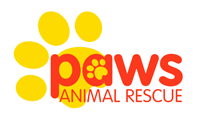Is the dog park right for your dog?
For many people, the idea of a dog park is ideal. Off leash time for their dog to run and socialise. Unfortunately the dog park can also be a place that causes a lot of highly stressful occurances for your dog and is often the least likely place appropriate socialisation can occur. It cause more negative experiences than positive ones.
While the dog park can be great for some dogs, for the vast majority it is simply not suitable and doesn’t meet any of their social needs, it just causes stress. It can be a place of high octane adrenaline and fast paced running. Dogs then learn to associate all other dogs with this high octane adrenaline and when faced with meeting other dogs on leash outside of the dog park, the frustration at not being able to meet them with the same gusto due to being on leash leads to frustration and tension which causes leash reactivity.
This doesnt mean you need to avoid the dog park at all costs. However, it’s important to understand that it is not for every dog and it is not up to us to force dog park experiences onto your dog. It is also not how we introduce a new puppy to other dogs. Advocate for your dog and their needs and know when it’s time to leave. Also, be sure to allocate time for “calm” on your dog’s walk and be sure that while running off leash is good, sniffing and working on engagement with you is more important. Give time for decompression and mental stimulation.
All of the experiences puppies have within their first 14 weeks of life make a permanent imprint on their brain about what’s safe and unsafe in the world. If they experience a very stressful situation or prolonged exposure to stressful situations, they can develop anxious or fear relayed behaviours that can be hard to manage in later life.
It’s critical that during early developmental periods, the new experiences your puppy has are positive — you don’t just want them to tough it out with a group of different dogs of all different personalities; you want them to be curious about all the elements of being social and confident about making good decisions while learning appropriate socialisation.
Your dog’s first experiences with other dogs shouldn’t be at a crowded dog park. It’s best to ease them into social situations — especially when they’re puppies. Behaviour professionals will recommend one-on-one meets and parallel walks with mature dogs so puppies can learn how to interact before taking them to a park with adult dogs.
When in the dog park, it is also important that you supervise your dog. It’s important that you know what to do if any tension occurs: Keep a watchful eye on your dog because usually they will warn another dog with a growl or snap before they become physically aggressive. If they are trying to run away or escape another dog, it’s time to leave. If they are humping or harassing a dog or multiple dogs, they are over stimulated, not having a good time and also need to leave.
Also, look out for aggressive physical cues such as standing very straight or direct eye contact. If you hear or notice any of these signs, put a leash on your dog and walk them out of the park and remain calm. As well as your own safety, its important to leave and not let this kind of body language escalate because dog fights can be dangerous to break up, cause injury and cause long lasting emotional damage to your dog.
Socialising safely is the priority, always.




